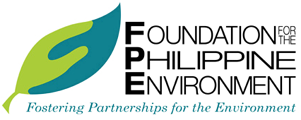News
Sarihay in Focus: “Yaman ng Bayan: Yamang Tubig” (TV5)
Posted on May 18, 2015(Seventh in an eleven-part series.)
In February 2014, TV5 launched Yaman ng Bayan, a fresh documentary series that aims to showcase the natural riches that the Philippines has to offer, while also exposing the pressing issues that place these precious resources in peril. The series was presented in hour-long episodes aimed to bring to the Filipino viewing public a greater awareness of the various treasures that the Philippines has been blessed to have, thus instilling a true sense of pride, as well as responsibility over this awesome bounty.
The Yaman ng Bayan episode on Philippine marine resources, entitled Yamang Tubig, earned Best TV Documentary honors from the Foundation for the Philippine Environment’s (FPE) first ever Sarihay Media Awards. The episode, anchored by Paolo Bediones, was crafted by executive producer Brandenberg Milla for TV5.
Showcasing beautifully shot seascapes and underwater footage, Yamang Tubig presents facts and figures clearly and concisely right from the outset. The episode starts out by establishing, first and foremost, the key advantage of the Philippines given its geographical location in the tropical region. Department of Environment and Natural Resources – Biodiversity Management Bureau (DENR-BMB) Executive Director Vincent Hilomen is presented, saying that the Philippines is among the 18 “megadiverse” countries of the world. He explains that while the Philippines is considerably a small country, area-wise, approximately 60%-70% of the world’s biodiversity can be found here.
A screengrab from the documentary.
Given its location in the tropics, where sunlight is able to provide energy for natural producers, as well as its archipelagic constitution, which allows clean flowing water to transport nutrients, the Philippines is home to approximately 500 reef-building coral species. The country is part of what is known as the coral triangle (along with Indonesia, Malaysia, Papua New Guinea, Timor Leste, and the Solomon Islands).
The high concentration and diversity of species here (overall, there are about 750 species of such corals) has given the country the reputation for being the “center of the center of marine biodiversity.”
Yamang Tubig also emphasizes that all these natural resources are driving forces for the nation’s economy in various ways. Apart from fishing, a livelihood which supports nearly 1.5 million Filipinos nationwide, rich marine resources are also key in tourism, as top beach and snorkeling or dive destinations are able to draw significant revenue from travelers from all around the world to local coastal communities.
World Wildlife Fund for Nature – Philippines (WWF Philippines) communications and media manager points out that the Tubbataha reefs, for example, is a naturally thriving marine ecosystem. Whereas a typical square kilometer of coral reef is able to produce 40 metric tonnes of seafood, a square kilometer of Tubbataha coral reef can produce over 200 metric tonnes.
Meanwhile, municipalities such as Donsol in Sorsogon has seen great growth, thanks to the remarkable whale shark presence in its waters. The whale sharks, once considered pests by fishermen for their tendency to destroy fishing nets, are now strongly protected and defended from the finning industry for the benefits they bring to the local community.
While shining the spotlight on the uplifting figures regarding how rich Philippine waters are, the show also underscores the prevalence of human abuse and exploitation over these resources. “Hindi kailanman ipinagdamot ng ating karagatan ang taglay nitong yaman, pero ang mga tao, patuloy itong nilalapastangan,” says Bediones in one of his spiels.
In the Philippines alone, the past 50 years of unregulated fishing and extraction has caused the degradation of coral reefs, according to Yan. From about 27,000 square kilometers of coral reefs, just 1% remain in pristine condition.
Hilomen also asserts that once we lose these natural treasures, we can never get them back. Even now, the cost of rehabilitating damaged coral reefs is far more than what it takes to regularly clean and protect them, so there truly is a huge challenge for us, Filipinos to be aware and active defenders and protectors of our rich marine heritage.
Watch the full documentary, available in four parts, starting here.
* * * * *
The Sarihay Media Awards was launched last February 2014 in recognition of the important role of the media in promoting awareness and better understanding of environmental and sustainable development issues among policymakers, decision makers, and the public. The campaign served as both acknowledgement and reward to those who deliver outstanding and responsible reportage of environmental news. The term "Sarihay" comes from the Filipino phrase, "Samu't Saring Buhay", which aptly describes biodiversity.

 DISPLAY CALENDAR
DISPLAY CALENDAR

 Read Policy Briefs
Read Policy Briefs
 View Our Partners
View Our Partners
 Access Grants MIS
Access Grants MIS
 Login to Webmail
Login to Webmail